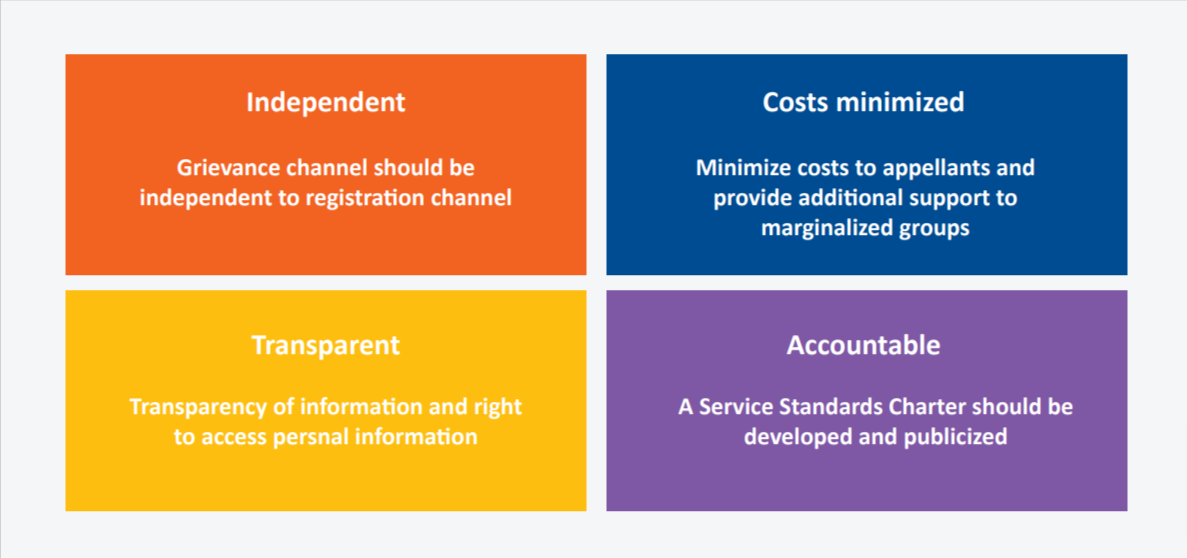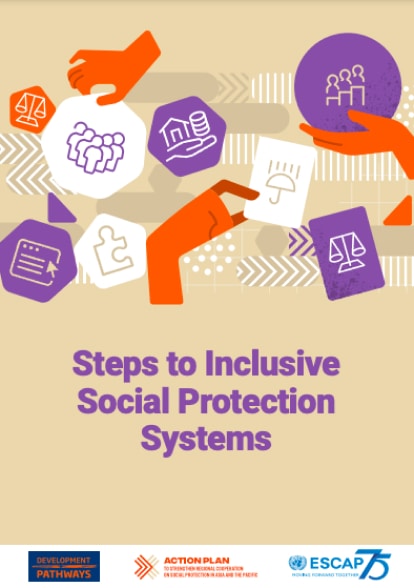What and why
As noted in the ESCAP Action Plan to Strengthen Regional Cooperation on Social Protection in Asia and the Pacific, governments should ensure that appeal and complaint mechanisms are institutionalized as part of the delivery process. This means that complaints and response mechanisms are in place to identify and address delivery and administrative issues. Without robust complaints mechanisms, accountability and quality may be compromised.
How
Governments need to ensure that formal procedures are in place to enable people enrolled in or registering for a benefit, to raise concerns regarding the registration, assessment, and benefit payment process. The two most common types of grievance are: appeals against exclusion during registration, assessment, and enrolment; and complaints about, for example, delays of payments, administrative errors, excessive distance to access payments, or fraud at pay points.
This requires the establishment of a grievance mechanism to uphold objectivity and identify systemic weaknesses that could undermine the effectiveness and reputation of the scheme and of the government. Access to, and information on, grievance mechanisms should be made publicly available to ensure that beneficiaries are aware of the appeal and complaint process. Governments can also use digital platforms, through online complaints mechanisms, or anonymous phone hotlines to increase availability and accessibility.
Grievance mechanisms with clear procedures, roles and responsibilities can be established by employing three tiers:
- The first tier should be operated by the frontline payment service provider, independent of the registration process, and deal with issues such as a lost scheme identification card or malfunctioning payment tokens.
- The second tier should be operated by the administrators of the social protection scheme and provide accessible channels to receive complaints of processes.
- The third tier should comprise an independent authority to act as a last resort, such as a Human Rights Commission, or an Ombudsman.
In each tier, governments must ensure that complaint and appeal procedures have been made public, are impartial, transparent, effective, simple, rapid, and accessible. To ensure fair and effective grievance mechanisms, those handling the appeal or complaint should not be those responsible for scheme or payment delivery. Information obtained on applicants at each tier must also be kept confidential to respect privacy, but can be anonymized and made available to applicants, beneficiaries, or others upon request to facilitate their own appeals or investigations. Principles to be achieved across the tiers are illustrated in Figure 8-1.
FIGURE 8‑1 Grievance and complaint mechanisms: good practice and principles

No fees should be charged at any tier in the process. ILO Recommendation 202 (R202) on Social Protection Floors states that complaint and appeal procedures should be free of charge to the applicant.
Appeals against exclusion are easiest to handle when eligibility criteria are clear, but more complicated to manage for targeted schemes when criteria are complex, such as with proxy means tests, or when beneficiaries are required to fulfil certain conditions to receive payments.

